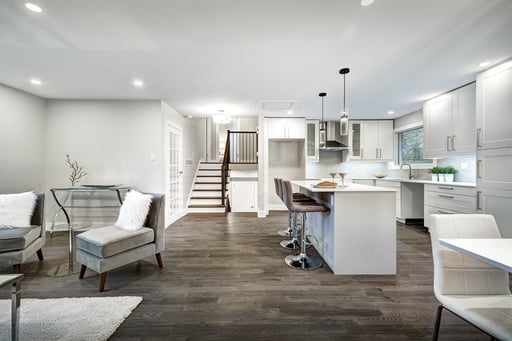Home flipping is a lucrative strategy that offers significant returns in a short amount of time, making it a great method for investors looking to make a quick profit. These returns can also serve as a launchpad for other, more permanent investments. If you want to make the most of a fix and flip project, there are going to be some key methods for maximizing profitability. Are you planning a home flip for your next investment? Continue reading for our guide on how to increase your returns.

Understand the Fix and Flip Strategy
In order to maximize the profitability of your project, it will be beneficial to have a solid understanding of the fix and flip process. A successful flip relies on making good decisions when choosing a property, choosing financing, and choosing renovations to perform. It will also require due diligence when researching locations to invest in and a property to flip. Finally, you will need to manage the project’s budget and timeline carefully, and be rigorously involved in marketing the property so you can get the most out of the sale.
The Research Stage
As mentioned, due diligence is key when selecting a market and a property to invest your hard-earned money into. By taking the time to research statistics on different markets, you may be able to identify areas with trends that you can capitalize on. For example, if there are a high number of people moving to an area, or if home prices are trending upwards, it will tell you it’s a great market to invest in.
You will also need to take care when selecting a property since not every home will make for a good flip. Avoid properties that require too much work, as this can easily eat into your profit margins. Major repairs like structural damage are often not worth the effort. You will also want to carefully calculate repair costs and your potential profit margins before making a purchase decision. A good rule of thumb for ensuring profit is the 70% rule, which says that for a home flip you should not pay more than 70% of a property’s after-repair value (ARV) minus renovation costs.
Budgeting and Planning
An area that is often overlooked by less experienced investors is the budgeting and planning stage of the project. Careful planning is the difference between a somewhat profitable deal and a very profitable one. When determining your budget, be sure to consider holding costs and your timeline along with the basic acquisition and renovation expenses. You will also want to ensure you are receiving adequate financing for your project. You may work with a private lender to get financing better tailored to home flipping, and you should consider leaving a 10% buffer in your calculations to deal with any unexpected costs that may arise.
Strategic Renovations for Max Impact
When selecting which renovations to perform to a property, you should be prioritizing the ones that will add maximum value while costing relatively little. Tary and take care of the smaller/low-cost items first, such as repainting walls or installing new lighting. Then you should focus on high-traffic areas like the kitchen and living room, where you can add new appliances or nicer finishes to easily modernize the room. Throughout the renovation process you will want to make sure to stay involved, and keep in close touch with your contractor so you can swiftly deal with any potential delays. Finally, don’t neglect the importance of curb appeal, since the exterior will be the first thing buyers see when browsing through properties. A little care here can go a long way in attracting potential buyers.
Marketing and Selling Strategies
Once renovations are completed comes the essential stage of listing and marketing the property. All your good efforts can go to waste if you aren’t able to make the most of the sale. Start by taking great photographs of the home, including its main amenities, and highlight these key areas as selling points when creating your listing. You should then make use of real estate groups on social media as a way to promote your listing in multiple places. Be sure to work closely with your real estate agent, as a good one will be able to quickly connect you with interested buyers.
Mitigating Risks
Finally, we want to discuss some strategies for mitigating risk in a fix & flip project, along with some suggestions for contingency planning. By dedicating an appropriate amount of time to due diligence you can avoid many of the financial pitfalls of a fix & flip investment. For example, researching markets and carefully selecting a property helps ensure that your deal will be profitable. You should also be flexible when it comes to negotiations in the sales stage, as long as it helps you close the deal. If you find that you just aren’t able to sell your property at a reasonable price, consider pivoting to a different exit strategy, such as renting the home on a monthly basis.
RCN Capital
The easiest way to save on your next investment is to obtain financing from a real estate lender that can get you the best leverages and rates. RCN Capital lends to real estate professionals, commercial contractors, developers & small business owners across the nation. We provide short-term fix & flip financing, long-term rental financing, and new construction financing for real estate investors. If you are looking to finance a home flip, RCN Capital has competitive loan options available.
.png?width=234&height=80&name=logo-white-1%20(2).png)
